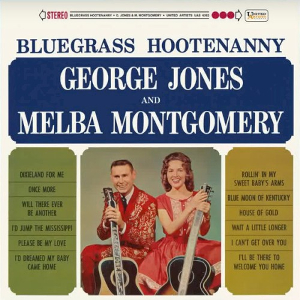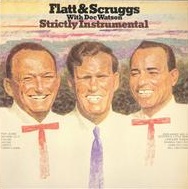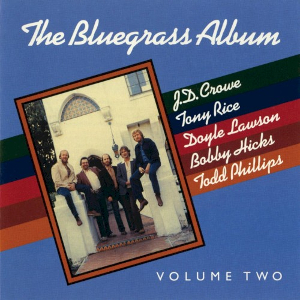
William Smith Monroe was an American mandolinist, singer, and songwriter, who created the bluegrass music genre. Because of this, he is often called the "Father of Bluegrass".

Bluegrass music is a genre of American roots music that developed in the 1940s in the Appalachian region of the United States. The genre derives its name from the band Bill Monroe and the Blue Grass Boys. Like mainstream country music, it largely developed out of old-time string music, though in contrast, bluegrass is traditionally played exclusively on acoustic instruments and also has roots in traditional English, Scottish, and Irish ballads and dance tunes as well as in blues and jazz. Bluegrass was further developed by musicians who played with Monroe, including 5-string banjo player Earl Scruggs and guitarist Lester Flatt. Monroe characterized the genre as, "Scottish bagpipes and ole-time fiddlin'. It's a part of Methodist, Holiness and Baptist traditions. It's blues and jazz, and it has a high lonesome sound."

Lester Raymond Flatt was an American bluegrass guitarist and mandolinist, best known for his collaboration with banjo picker Earl Scruggs in the duo Flatt and Scruggs.

Earl Eugene Scruggs was an American musician noted for popularizing a three-finger banjo picking style, now called "Scruggs style", which is a defining characteristic of bluegrass music. His three-finger style of playing was radically different from the traditional way the five-string banjo had previously been played. This new style of playing became popular and elevated the banjo from its previous role as a background rhythm instrument to featured solo status. He popularized the instrument across several genres of music.

"Foggy Mountain Breakdown" is a bluegrass instrumental, in the common "breakdown" format, written by Earl Scruggs and first recorded on December 11, 1949, by the bluegrass artists Flatt & Scruggs and the Foggy Mountain Boys. It is a standard in the bluegrass repertoire. The 1949 recording features Scruggs playing a five-string banjo.
Benny Edward Martin, was an American bluegrass fiddler who invented the eight-string fiddle. Throughout his musical career he performed with artists such as the Bluegrass Boys, Don Reno, the Smoky Mountain Boys and Flatt and Scruggs, and later performed and recorded with the Stanley Brothers, Hylo Brown, Jimmy Martin, Johnnie and Jack, and the Stonemans, among others. He was inducted into the International Bluegrass Music Hall of Fame in 2005.

James Henry Martin was an American bluegrass singer and musician, known as the "King of Bluegrass".

Flatt and Scruggs were an American bluegrass duo. Singer and guitarist Lester Flatt and banjo player Earl Scruggs, both of whom had been members of Bill Monroe's band, the Bluegrass Boys, from 1945 to 1948, formed the duo in 1948. Flatt and Scruggs are viewed by music historians as one of the premier bluegrass groups in the history of the genre.
Josh Graves, born Burkett Howard Graves, was an American bluegrass musician. Also known by the nicknames "Buck," and "Uncle Josh," he is credited with introducing the resonator guitar into bluegrass music shortly after joining Lester Flatt, Earl Scruggs and the Foggy Mountain Boys in 1955. He was inducted into the International Bluegrass Music Hall of Honor in 1997.
The Nashville Grass was a bluegrass band founded by Lester Flatt in 1969, after the end of his partnership with Earl Scruggs and the Foggy Mountain Boys. Flatt hired most of the Foggy Mountain Boys for his new band.
Traditional bluegrass, as the name implies, emphasizes the traditional elements of bluegrass music, and stands in contrast to progressive bluegrass. Traditional bluegrass musicians play folk songs, tunes with simple traditional chord progressions, and on acoustic instruments of a type that were played by bluegrass pioneer Bill Monroe and his Blue Grass Boys band in the late 1940s. Traditional bands may use their instruments in slightly different ways, for example by using multiple guitars or fiddles in a band.

Bluegrass Hootenanny is an album by American country music artists George Jones and Melba Montgomery released in 1964 on the United Artists Records.
CMH Records is a Los Angeles-based, independent country and bluegrass label with several subsidiary labels, including Vitamin Records, Crosscheck, Dwell, and Rockabye Baby!. The label release diverse styles of music including string quartet tributes, punk, metal, and lullabies.

Strictly Instrumental is the title of a recording by American folk music artists Doc Watson, Lester Flatt and Earl Scruggs, released in 1967.

Bluegrass Album, Vol. 2 is a follow-up album by bluegrass supergroup, Bluegrass Album Band, released in 1982. As all the members already had their own duties in their groups, they originally intended to release only one album and disband. However, they continued with this volume plus four more and set the standards of the bluegrass music on a very high level.

Bluegrass Album, Vol. 5 - —Sweet Sunny South is a fifth album by bluegrass supergroup, Bluegrass Album Band, released in 1989. Violinist Vassar Clements is on this album replacing Bobby Hicks, and bass duties are taken over by Mark Schatz (instead of Todd Philips, who otherwise plays on all Bluegrass Album Band albums.

The Earls of Leicester is an American bluegrass group, assembled by Jerry Douglas in 2013 to present the music of Lester Flatt, Earl Scruggs and their band the Foggy Mountain Boys to a contemporary audience. Their eponymous debut album earned a Grammy Award for Best Bluegrass Album in 2015.
Jack Lawrence is an American bluegrass guitarist. He was Doc Watson's performing partner since the early 1980s. As major influences, Lawrence cites Doc Watson, Clarence White, and Django Reinhardt.













